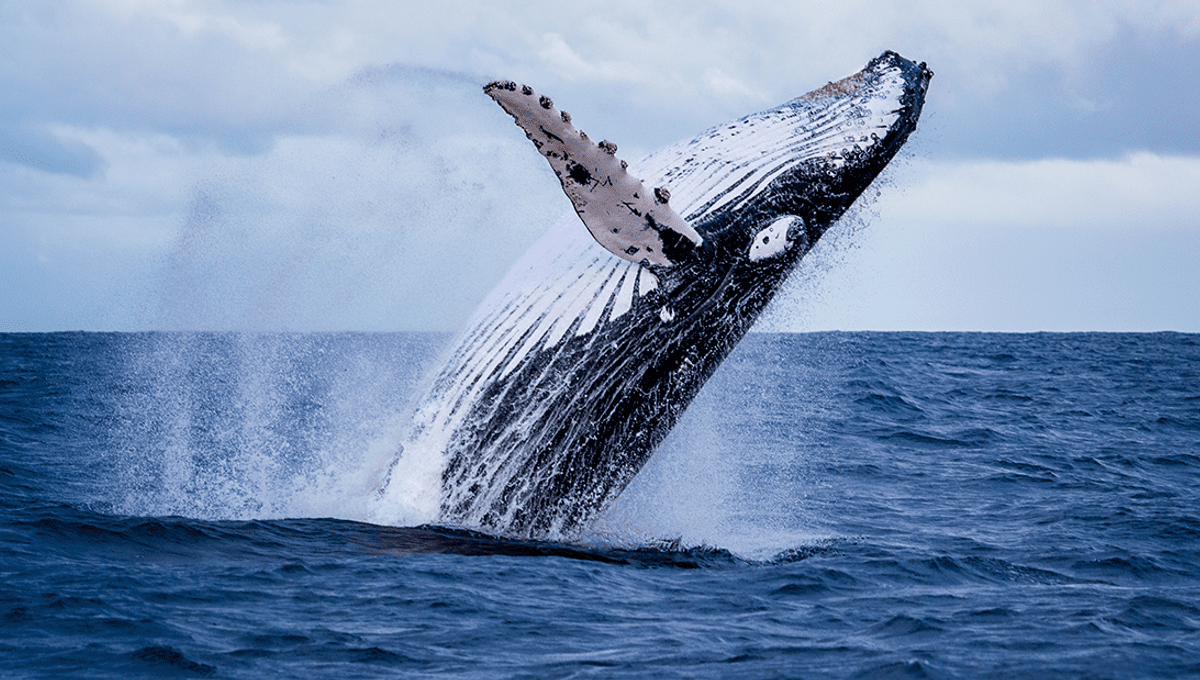
A TikTokker who discovered a strange and mysterious “sea creature” later learned from biologists that she was in fact dealing with a bog-standard whale penis.
TikTokker @bootscootinaf found the strange, long, fleshy object the size of her leg in the crystal-clear waters of North Queensland, Australia.
The clip shows the “animal part” in all its glory, before she compares it to the size of her foot. The caption appealed for help identifying the body part, which people in the comments did. In an updated video, she revealed that she had her answer.
“With the help of TikTok and marine biologists,” she said in part three of her whale penis series, “I think we have finally figured out what that weird animal thing is. It’s a whale dick.”
She went on to say that “apparently, the males fight and they bite each other’s things off and then they just wash up on beaches all around the world” but this, as wildlife scientist Dr Vanessa Pirotta quickly refuted on TikTok, is not behavior that has been documented.
“Now, if this is a male humpback whale penis, it’s very unlikely that it was bitten off by another humpback whale,” Pirotta said in the video, while also noting that it’s not possible to say that it is a whale penis without getting a better look from all angles.
“The reason being, well, I’ve not actually heard of that theory before, but these whales don’t have any teeth at all, rather they have long hair-like strands known as baleen. And to bite another male whale’s penis off is something that is not have heard of.”
As for the part about whale penises explaining the Loch Ness Monster, this is surprisingly plausible (or at least, it’s possible) that some “sea serpent” sightings are in fact of whale penises.
In a famous early sighting of one such sea serpent, Danish Lutheran missionary Hans Egede wrote that on 6 July 1734, he and those aboard his ship had seen “a most terrible creature, resembling nothing they saw before. The monster lifted its head so high that it seemed to be higher than the crow’s nest on the mainmast. The head was small and the body short and wrinkled. The unknown creature was using giant fins which propelled it through the water. Later the sailors saw its tail as well. The monster was longer than our whole ship”.
In the accounts, the creatures were described as serpentlike and drawn as such. Ig Nobel prize-winner Charles Paxton took a look at this and other sightings of sea serpents back in 2005, for possible explanations of the accounts. With comparisons to modern photographs and descriptions, they concluded that several of the accounts were actually of whale boners.
“A more serious objection to a cetacean is that the rear of the animal was described and drawn as serpent-like. Although whales are found, and can survive, without flukes, serpent-like or eel-like bodies are not usually associated with the rapid thrust that would be required to rear the whole body high out of the water,” he and several other authors wrote in Archives of Natural History.
“However, there is an alternative explanation for the serpent-like tail. Many of the large baleen whales have long, snake-like penises. If the animal did indeed fall on its back then its ventral surface would have been uppermost and, if the whale was aroused, the usually retracted penis would have been visible. The penises of the North Atlantic right whale and (Pacific) grey whale can be at least 1.8 metres long, and 1.7 metres long respectively, and could be taken by a naïve witness for a tail.”
“That the tail was seen at one point a ship’s length from the body suggests the presence of more than one male whale.”
Source Link: TikTokker Finds Mysterious "Sea Creature", Is Informed By Biologists That It Is A Whale Penis